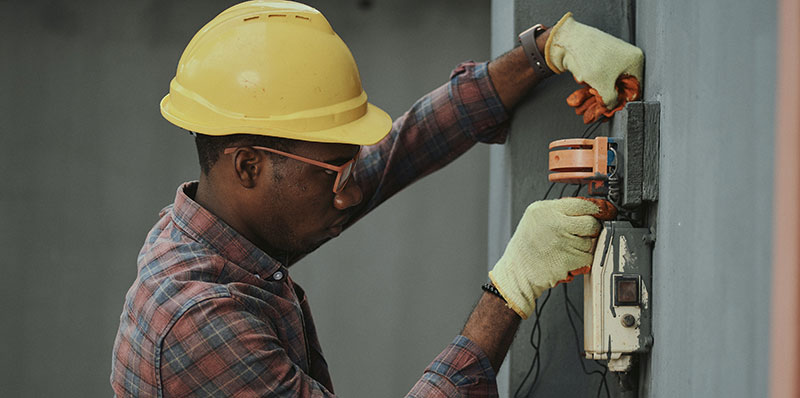Advertisement
Electricity is all around us, powering our homes, our gadgets, and even our bodies. It’s a fundamental force of nature that has shaped the modern world in countless ways. Teaching kids about electricity not only helps them understand the world they live in but also equips them with valuable knowledge about safety and conservation. Here are 20 essential things to teach kids about electricity.
1. What Is Electricity?
Start by explaining the concept of electricity in simple terms as explained by your local electrician. You can say something like, “Electricity is a form of energy that comes from tiny particles called electrons. It flows through wires and powers our lights, appliances, and gadgets.”
2. Where Does Electricity Come From?
Discuss the sources of electricity, such as power plants, wind turbines, and solar panels. Make it engaging by showing pictures or diagrams to help them visualize these concepts.
3. Conductors and Insulators
Teach kids about conductors (materials that allow electricity to flow easily) and insulators (materials that prevent electricity from flowing). As per your local electrician, you can use everyday examples like metal being a good conductor and rubber being a good insulator.
4. Electrical Circuits
Explain the concept of an electrical circuit. You can use a simple diagram to illustrate how electricity flows from a power source, through wires, and back to the source. Show how a switch can open or close the circuit to control the flow of electricity.
5. Safety First
Emphasize the importance of electrical safety. Teach kids never to touch exposed wires, sockets, or electrical appliances with wet hands. Explain that they should never pull a plug out of the wall by yanking on the cord. Instead, they should grip the plug and pull it out gently.
6. Static Electricity
Introduce kids to static electricity, which is a fascinating aspect of electricity. You can demonstrate this by rubbing a balloon against your hair and showing how it can make your hair stand on end. Explain how static electricity is created by the movement of electrons.
7. Lightning
Discuss lightning as a natural form of electricity. Explain how it occurs during thunderstorms when electrical charges build up in the clouds and discharge in the form of a lightning bolt. Use videos or illustrations to make it more engaging.
8. Magnets and Electricity
Teach kids about the relationship between magnets and electricity. Explain how moving a magnet near a coil of wire can generate electricity, which is the principle behind generators and many electronic devices.
9. Renewable Energy
Introduce the concept of renewable energy sources like wind and solar power. Explain how these sources generate electricity without depleting natural resources and contribute to a cleaner environment.
10. Saving Electricity
Teach kids about the importance of conserving electricity. Discuss simple habits like turning off lights when leaving a room, unplugging chargers when not in use, and using energy-efficient appliances.
11. Electrical Appliances
Explain how various household appliances work. Show them how a toaster toasts bread, a blender mixes ingredients, and a fan cools the air. Discuss the role of electricity in making these devices function.
12. Electrical Safety Gear
Introduce the concept of safety gear such as rubber gloves and safety goggles when working with electricity. Explain that these items protect people from electrical shocks when they need to handle wires or perform electrical tasks.
13. Careers in Electricity
Highlight the various careers related to electricity, such as electricians, electrical engineers, and scientists. Encourage kids to explore their interests in these fields if they have a fascination with electricity.
14. History of Electricity
Share a brief history of electricity, from Benjamin Franklin’s experiments with lightning to the invention of the light bulb by Thomas Edison. Explain how these discoveries shaped the modern world.
15. Electricity in Nature
Show kids how electricity exists in nature, beyond human-made systems. Discuss electric eels, which produce electricity to stun prey, and bioluminescent creatures like fireflies, which emit light through chemical reactions.
16. Renewable Energy Projects
Engage kids in hands-on projects related to renewable energy. Build a simple solar oven to cook s’mores or create a mini wind turbine to harness wind energy. These activities make learning about electricity fun and practical.
17. Electrical Vocabulary
Teach kids essential electrical vocabulary, such as voltage, current, resistance, and circuit. Understanding these terms will help them grasp more advanced concepts as they continue to learn about electricity.
18. Troubleshooting
Explain how to troubleshoot common electrical problems at home, such as a blown fuse or a tripped circuit breaker. Show them how to safely reset a circuit breaker or change a blown fuse.
19. Sustainable Living
Connect the dots between electricity and sustainable living. Discuss how reducing energy consumption not only saves money but also helps protect the environment. Encourage kids to be mindful of their energy use.
20. Ask Questions
Lastly, encourage kids to ask questions. Make them curious about electricity and its many facets. Foster their inquisitiveness by exploring answers together and conducting experiments to satisfy their curiosity.
Thus, teaching kids about electricity is not only educational but also empowering. It equips them with essential knowledge about the world around them and the tools to make informed decisions about energy use and safety. By making the learning process engaging and interactive, you can inspire a lifelong fascination with the electrifying world of electricity.

